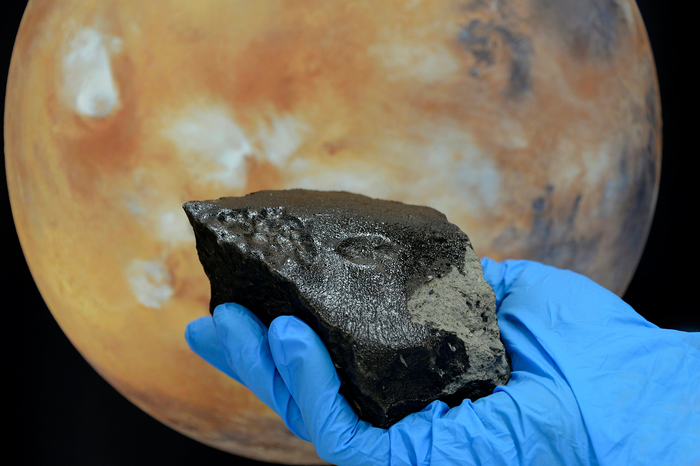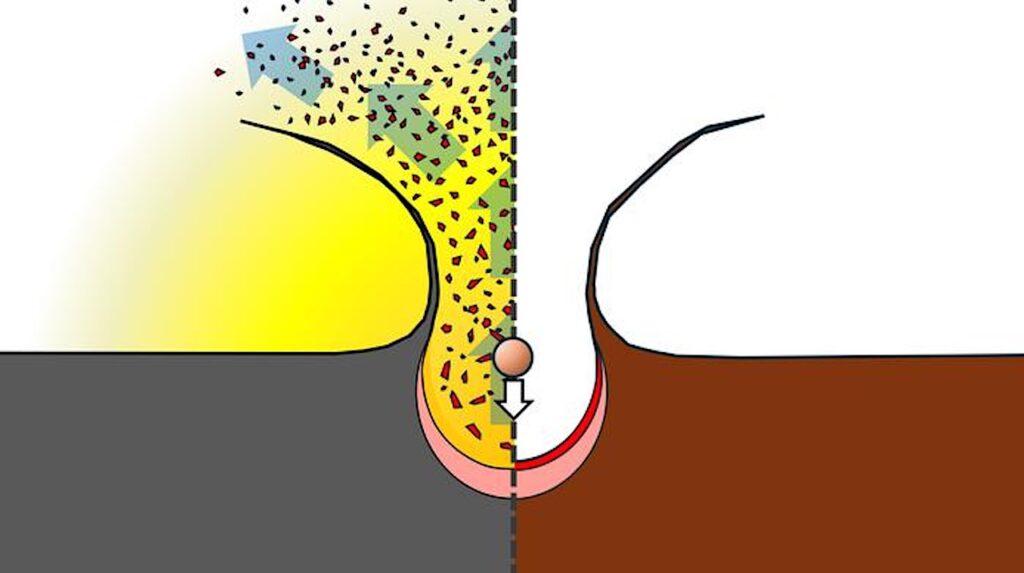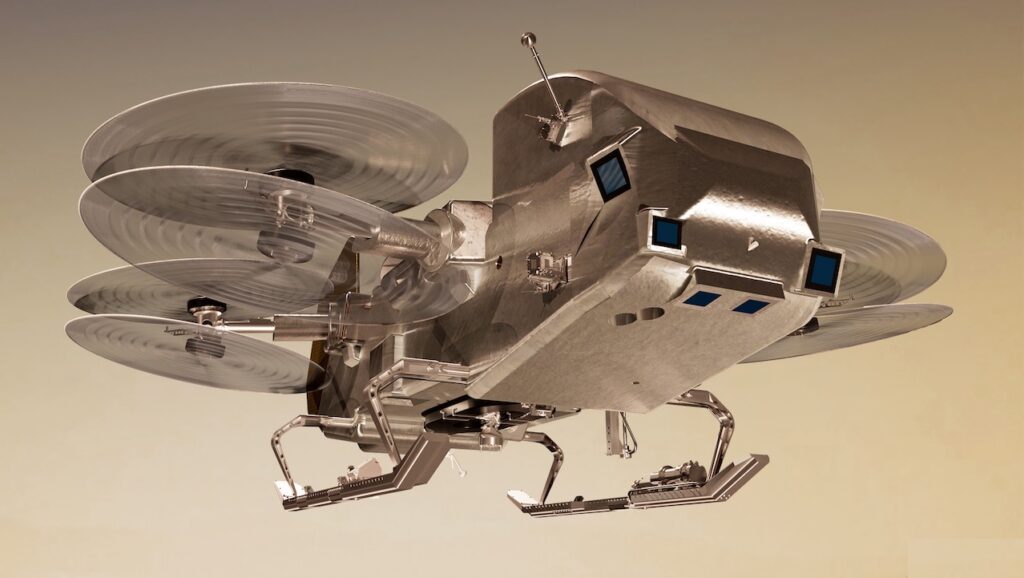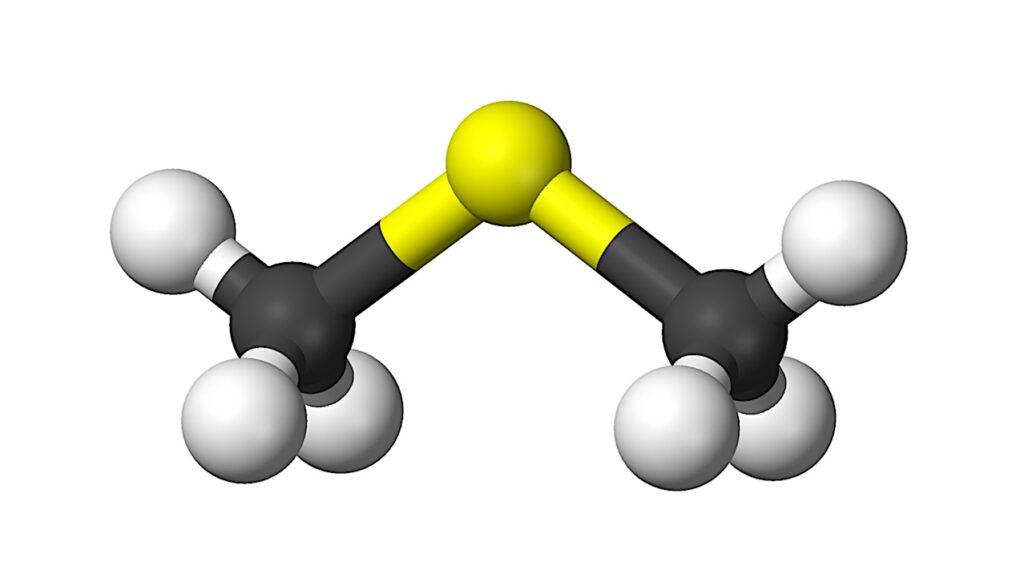Martian Meteorite Tissint Contains A Large Diversity Of Organic Compounds

The Martian meteorite Tissint contains a huge diversity of organic compounds, found an international team of researchers led by Technical University of Munich and Helmholtz Munich’s Philippe Schmitt-Kopplin and including Carnegie’s Andrew Steele. Their work is published in Science Advances.
Tissint, which crash landed in Morocco more than 11 years ago, is one of only five Martian meteorites that have been observed as they fell to Earth. Pieces of it were found scattered around the desert about 30 miles from the town after which it is named.
This sample of Martian rock was formed hundreds of millions of years ago on our next-door planetary neighbor and was launched into space by a violent event. Unraveling the origin stories of the Tissint meteorite’s organic compounds can help scientists understand whether the Red Planet ever hosted life, as well as Earth’s geologic history.
“Mars and Earth share many aspects of their evolution,” said lead author Schmitt-Kopplin. “And while life arose and thrived on our home planet, the question of whether it ever existed on Mars is a very hot research topic that requires deeper knowledge of our neighboring planet’s water, organic molecules, and reactive surfaces.”
Organic molecules contain carbon, hydrogen, oxygen, nitrogen, sulfur, and sometimes other elements. Organic compounds are commonly associated with life, although previous Martian meteorite research demonstrated that they can be created by non-biological processes, referred to as abiotic organic chemistry.
“Understanding the processes and sequence of events that shaped this rich organic bounty will reveal new details about Mars’ habitability and potentially about the reactions that could lead to the formation of life,” added Steele, who has done extensive research on organic material in Martian meteorites, including Tissint, and is a member of both the Perseverance and Curiosity rovers’ science teams.
The researchers were able to thoroughly analyze the meteorite’s organic inventory, revealing a link between the type and diversity of organic molecules and specific mineralogy. Their efforts resulted in the most comprehensive catalog ever made of the diversity of organic compounds found in a Martian meteorite or in a sample collected and analyzed by a rover. This work uncovered details about how the processes occurring in Mars’ mantle and crust evolved, especially with regard to abiotic organics that formed from water-rock interactions.
Of particular interest was the abundance of organic magnesium compounds, a suite of organic molecules not previously seen on Mars, which offer new insights about the high-pressure, high-temperature geochemistry that shaped the Red Planet’s deep interior and indicate a connection between its carbon cycle and its mineral evolution.
The researchers say that samples returned from Mars by future missions should provide an unprecedented amount of information about the formation, stability and dynamics of organic compounds in real Martian environments.
Funding for this work was supplied by the Deutsche Forschungsgemeinschaft (DFG, German Research Foundation) – Project-ID 364653263 – TRR 235 (CRC 235).
The Carnegie Institution for Science (carnegiescience.edu) is a private, nonprofit organization headquartered in Washington, D.C., with three research divisions on both coasts. Since its founding in 1902, the Carnegie Institution has been a pioneering force in basic scientific research. Carnegie scientists are leaders in the life and environmental sciences, Earth and planetary science, and astronomy and astrophysics.
Complex carbonaceous matter in Tissint martian meteorites give insights into the diversity of organic geochemistry on Mars, Science Advances
Astrobiology








